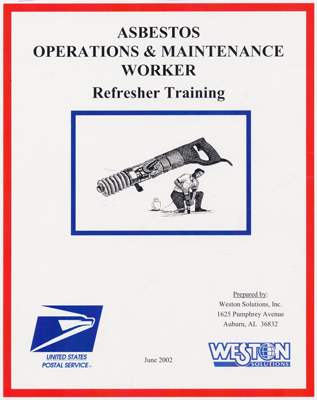
Asbestos Operations and Maintenance Training
UNITED STATES POSTAL SERVICE (USPS) AND WESTON SOLUTIONS, INC. (PRIME CONTRACTOR)
TEXAS, OKLAHOMA
OSHA requires maintenance workers who are performing operations and maintenance activities on asbestos-containing building materials in the workplace to undergo sixteen hours of initial training and an annual eight hour refresher. dse personnel, who are Texas Licensed Asbestos Inspectors, taught the sixteen hour and eight hour training classes required by OSHA to approximately one hundred fifty (150) USPS workers and supervisors at various locations within Texas and Oklahoma. Training included lectures, hands-on exercises with HEPA vacuums, heat guns and hammer drills as well as a final exam. The training included rules and needs, and was focused on the specific asbestos-containing building materials identified in USPS facilities.
Compliance Audit
DFW INTERNATIONAL AIRPORT
DALLAS, TEXAS
dse personnel performed an Environmental Compliance Audit of DFW Airport’s Environmental Management Department in conjunction with several other consultants. This audit included a walk through of many on-site facilities as well as completing document review of a wide variety of environmental segments including, but not limited to, wastewater, underground storage tanks, aboveground storage tanks, storm water, and hazardous waste generation and disposal.
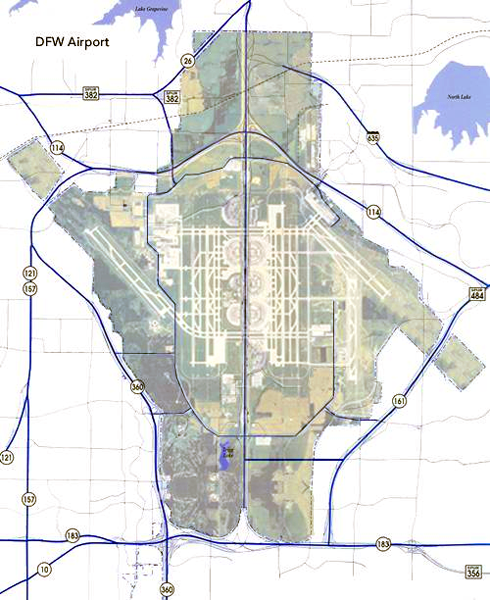
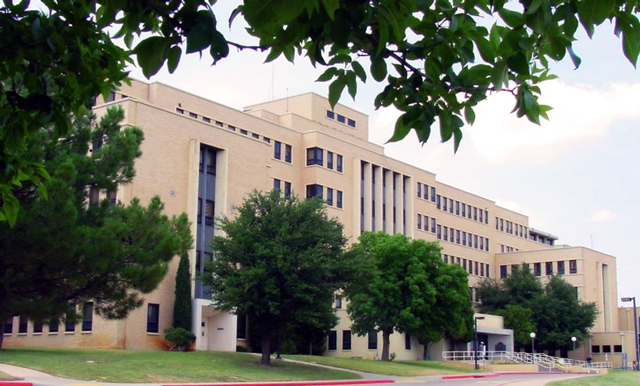
Comprehensive Asbestos Survey
VETERANS AFFAIRS MEDICAL CENTER (VAMC)
BIG SPRING, TEXAS
dse completed an asbestos survey tri-annual update for the VA Hospital located in Big Spring, TX. This facility was built in the late 1940’s and included approximately 10 main buildings/steam tunnels. The project included review of 7 previous surveys and abatement reports and building AutoCAD™ drawings and collection of approximately 60 confirmation or new area samples. However, the AutoCAD™ drawings had not ever been incorporated into the surveys/abatement reports.
dse is incorporating the known asbestos locations in each building, floor and room into color coordinated/cross referenced maps so that building/maintenance personnel can easily ascertain if asbestos is known or suspected in building materials in an area and what type of material is suspect (flooring, wallboard, thermal systems. etc.) prior to maintenance, renovation, and/or repairs. Tables will also be summarized and linked to mapping data. These maps will also assist hospital personnel prepare bid packages for phased future abatement. dse is also providing estimates of costs for abatement and specifications for design of the abatement plan.
Category: Asbestos and Lead-Based Paint Surveys
Conservation Planning Services
U.S. DEPARTMENT OF AGRICULTURE – NATURAL RESOURCES CONSERVATION SERVICE (NRCS)
UNITED STATES, SAIPAN, GUAM, CARIBBEAN
dse is managing the contract and providing environmental expertise including NEPA, EAs, EISs, and watershed management, from offices in Texas. dse is utilizing the extensive network of AMEC and other sub-consultant offices to provide local services to the NRCS state offices. The dse/AMEC Team are bringing the right resources and the best value to NRCS.
Category: Watershed Planning and Rehabilitation
Environmental Assessments with NEPA Compliance/Permits
NEW CONTROL TOWER/LOC/DME
ABILENE AIRPORT, ABILENE, TEXAS
dse performed two draft EAs for the construction/installation of a new Control Tower and LOC/DME for RWY 17R. dse developed the scoping documents and work plan, and provided recommendations and letters for additional compliance/permits including compliance with §7 of the Endangered Species Act, §106 of the National Historic Preservation Act, and consultation with the state wildlife agency regarding state-sensitive species, as needed. A list of “stakeholders” and agencies (Federal, State and/or local) that needed to be included in the NEPA process was prepared. dse also prepared an EDDA under FAA protocol for property exchange. dse facilitated the public hearings and other public relations tasks for this EA. All three reports are awaiting Client review to finalize.
Category: National Environmental Policy Act (NEPA)
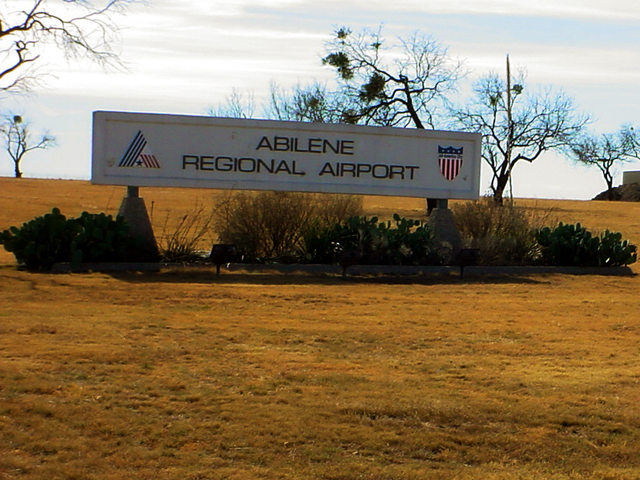
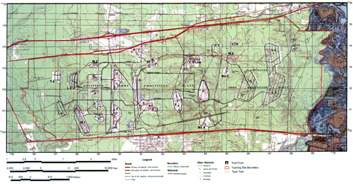
Environmental Baseline Study (EBS)
U.S. DEPARTMENT OF THE ARMY
MINDEN, LOUISIANA
dse performed an extensive EBS on 1,284 acres of the 14,995 acre Louisiana Army Ammunition Plant (LAAP) facility. The purpose of the EBS was to survey the environmental setting, evaluate the environmental impacts of past practices and assess all areas of interest for the purpose of completing the conveyance of the LAAP from the U.S. Department of Army to the State of Louisiana.
The project addressed all five steps in an EBS: records review, site reconnaissance, interviews with knowledgeable parties, analysis of gathered information, and developing the report. dse reviewed over 200 buildings and 15 major tenant leases, comprising a total of over 300,000 square feet. dse’s tasks included compiling the new EBS report with a previously completed EBS and other documents, to prepare one comprehensive report. The draft EBS report was produced in less than eight weeks to meet project deadlines.
Environmental Investigations: Asbestos and Lead-based Paint
KELLY AIR FORCE BASE (KAFB)
SAN ANTONIO, TEXAS
dse conducted a limited environmental investigation of asbestos and lead based paint at the base fire suppression tank farm prior to demolition. The investigation included three buildings, containing about 7,500 square feet of area, and the tank farm. dse prepared a report that provided background information, sampling protocols, sample locations, sample descriptions, site drawings, photo logs, laboratory reports, summary tables and conclusions/recommendations.
Category: Asbestos and Lead-Based Paint Surveys

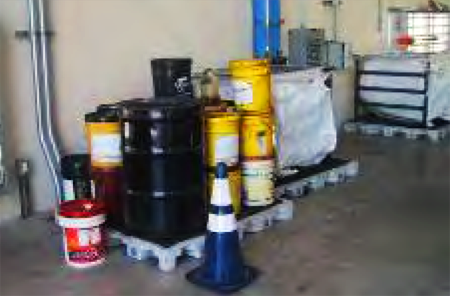
Facility Response Plan (FRP) and Spill Prevention, Control, and Countermeasure (SPCC) Inspection, E-Plan FRP Initiative
U.S. EPA SUPERFUND TECHNICAL ASSESSMENT AND RESPONSE TEAM (START) REGION 6 AND WESTON SOLUTIONS, INC. (PRIME CONTRACTOR)
TEXAS, NEW MEXICO, LOUISIANA, ARKANSAS, OKLAHOMA
dse provides WESTON, with one full time employee as part of their Dallas-based team for this project. USEPA uses its START contracts to obtain confirmation and verification of compliance with OPA 90 rules and WESTON has been tasked with conducting FRP and SPCC inspections consistent with EPA’s SOPs. A total of 960 FRP facilities will be inspected under this contract. In addition, WESTON provides technical support with development of an electronic FRP application capability.
plan to verify that it addresses all required elements: ERAP, facility information, emergency response information, hazard evaluation, discharge scenarios, drills/exercises and response training, etc. Inspection notification and on-site inspections are performed to verify FRP implementation, as well as site photography, data entry, report generation, and drafting approval letters for the On-scene Coordinator’s signature. ERAP information is digitized into the OSCARS data layer. WESTON is conducting a pilot/demonstration inspection at the first 10 FRP facilities using the automated inspection process and Hammerhead tablet computers.
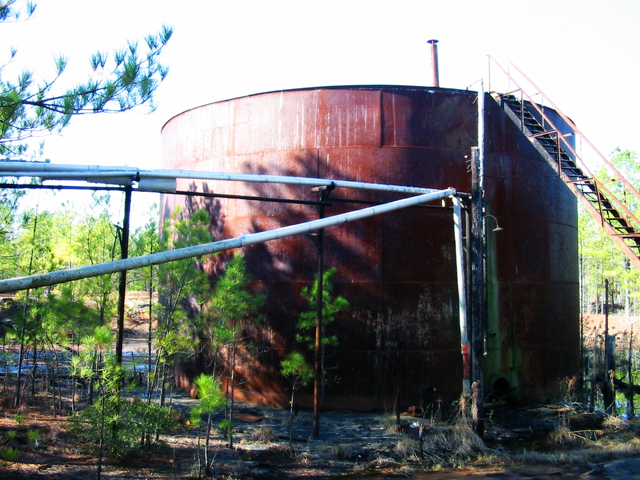
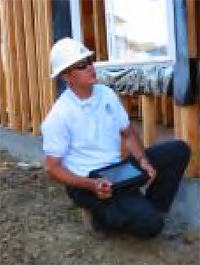
WESTON, with dse support has also been tasked with conducting SPCC facility inspections and has completed over 300 of these inspections. Each inspection consists of a review of the required Plan elements, including P.E. certification, manager’s signature, spill history, equipment failure predictions, system layout, hazard identification and proper sequencing. On-site inspections are performed to verify that the technical, performance-based requirements have been implemented and are targeted at facilities listed in the EPA’s SPCC database. A series of 10 SPCC inspections were conducted in the Dallas/Ft. Worth area to pilot/demonstrate the use of the automated inspection process with Hammerhead tablet computers.
Category: Oil Pollution Act – Compliance Support
Groundwater and Contaminant Transport Modeling to Verify Phytoremediation Effectiveness
ABERDEEN PROVING GROUNDS FOR WESTON SOLUTIONS, INC.
ABINGDON, MARYLAND
dse evaluated the remedial performance of a phytoremediation system to remediate an approximate 80 acre site that had been previously used for military munitions testing. The purpose of this evaluation was to:
- Estimate the degree of VOC plume capture (hydraulic containment) generated by the trees;
- Evaluate seasonal effects on tree’s capacity to contain the plume;
- Examine both the lateral and vertical extent of capture;
- Predict the remedial improvements gained by planting 600 additional trees.
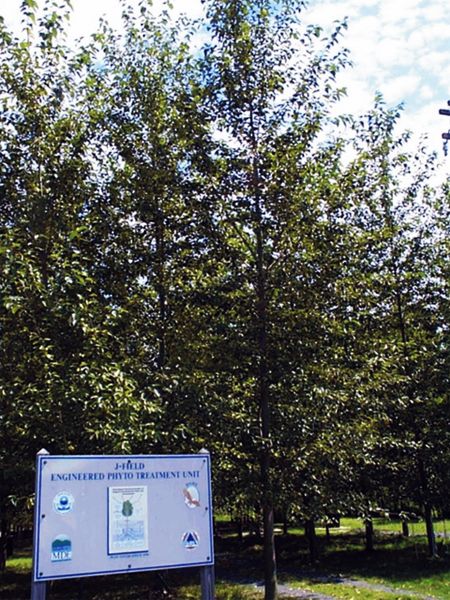
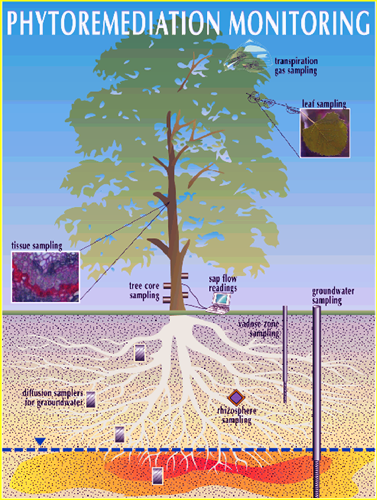
dse reviewed the analyses of continuously collected groundwater level data from the previous 19 months. Data also included site-specific weather and tidal data. dse also periodically measured poplar tree transpiration rates, constructed seasonal water table maps, performed hydrograph analysis, developed a groundwater budget, and simulated the aquifer responses to phytoremediation using the MODFLOW computer groundwater model.
Hazardous Materials Assessment
FORT SAM HOUSTON (ARMY CORPS OF ENGINEERS), OLD BROOKE ARMY MEDICAL CENTER AND BEACH PAVILION
SAN ANTONIO, TEXAS
dse performed comprehensive hazardous materials consulting and sampling prior to redevelopment of the former Brooke Army Medical Center and Beach Pavilion Complexes (comprising 500,000 sq. feet. The former facilities had been unoccupied for six years prior to the assessment. dse provided an assessment of asbestos, lead-based paint, silver (from x-ray equipment), PCBs, mold and other materials contained in the buildings, and developed recommendations and cost estimates for remediation of those materials.
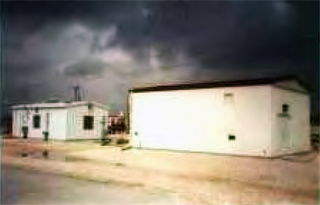
Historic preservation issues were also a concern as well as infestation by avian threatened species. dse established recycling and other disposal options for hazardous and/or salvage-valued equipment and building materials, as well as establishing a protocol so that the bulk of the construction/demolition debris could be disposed of without remediation of the lead-based paint, which was found throughout the structures.
Category: Asbestos and Lead-Based Paint Surveys
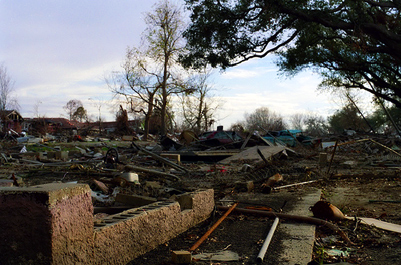
Hurricane Katrina, Rita, Ike, and Gustav Response
U.S. EPA SUPERFUND TECHNICAL ASSESSMENT AND RESPONSE TEAM (START) REGION 6 AND WESTON SOLUTIONS, INC. (PRIME CONTRACTOR)
SOUTHERN AND WESTERN LOUISIANA AND SOUTHERN TEXAS
As a First Tier Subcontractor, dse participated in the U.S. EPA Unified Command Response following the aftermath of Hurricanes Katrina, Rita, Gustav, and Ike since September 2005. The total response from dse has included over 190 individuals in 120 environmental professional positions at five command centers. dse activities included interfacing daily with staff at all levels of the EPA as well as representatives of the LDEQ, TCEQ, Corps of Engineers, National Guard, and other responding agencies.
dse initially had six first response “Strike Team” personnel on-site as of September 2, 2005 to help WESTON set up the EPA Command Center in the LDEQ Baton Rouge office. dse also performed many upper level functions until appropriate EPA personnel arrived. Initial personnel performed their duties under difficult situations for an extended period until such basic provisions were available including: clogged land lines, lack of cell phone coverage and basic necessities, such as hotel rooms, fuel and food availability, transportation, and etc, dse’s tasks included conducting safety planning; logistics; resources, accounting, assistance in planning and supervising the HHW; IT documentation and GIS support; public relations for officials about environmental issues and helping EPA Command and WESTON to organize and manage the IAP and Situation Report preparations throughout the project.
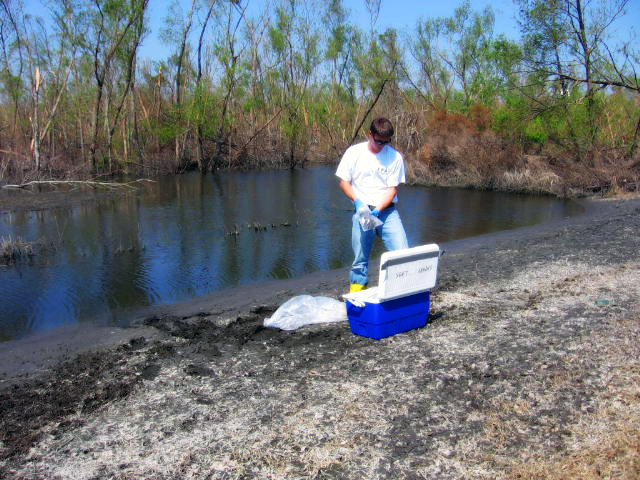
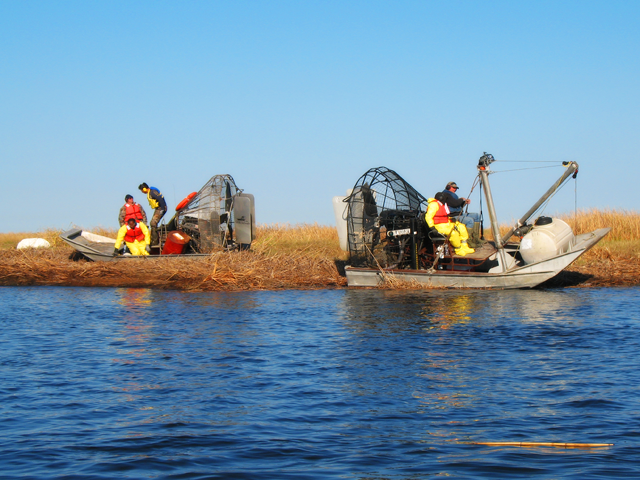
During the hurricanes Ike/Gustav response, dse provided field personnel to assist with recon and recovery of hazardous materials storage containers throughout southern Louisiana and Texas.
Category: Disaster Management
Hydraulic Lift Removals, USTs, and Operations and Management Plans
UNITED STATES POST OFFICE (USPS)
NORTH CENTRAL TEXAS
dse furnished all material, labor and equipment for the removal of in-ground hydraulic vehicle lifts and/or USTs at seven locations in Northwest Texas. All vehicle lifts and equipment were disposed of and all oil from the lifts, lines and tanks were recycled. Soil samples were taken from the lift pit floors and analyzed. In some cases, correspondence with the TCEQ was required due to levels of impact in the soils. The holes were then filled in, concreted and new electrical circuits installed to accommodate the new lifts. In some instances new transformers and panels were required to also accommodate the new equipment.
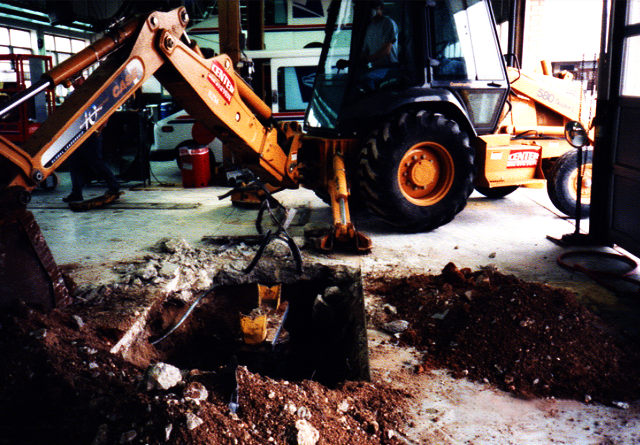
Category: Aboveground/Underground Storage Tank (AST/UST) Installation, Repair, Removal and Remediation
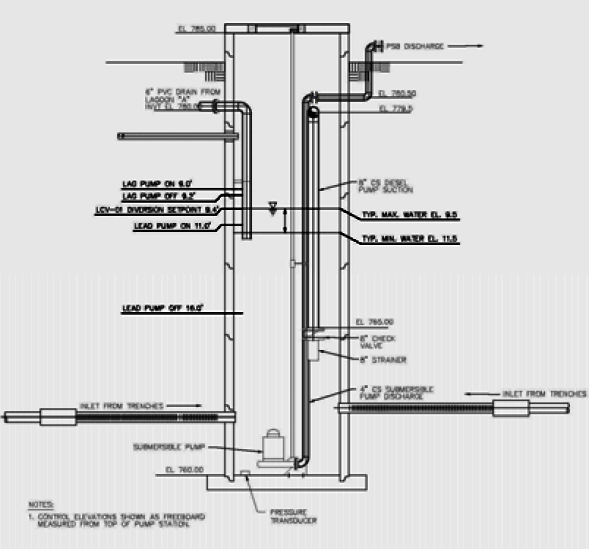
Long-Term Monitoring and Operations and Maintenance
DEPARTMENT OF THE NAVY
MCGREGOR, TEXAS
owned/contractor-operated facility with a 50-year history of Naval weapons manufacturing and chemical usage. dse was contracted in June 2009 to provide the annual Long-Term Biological Monitoring and Maintenance services at NWIRP McGregor. dse is currently providing the personnel, materials, equipment, and transportation necessary to maintain, operate, repair, modify, test, and monitor the fluidized-bed reactor (FBR) groundwater treatment system, maintain landfill caps and monitor the permeable reactive barrier walls. Investigation data were compiled and interpreted in a series of clear and concise reports. This includes 15 active biowalls (permeable reactive barriers); five onsite capped landfills, a fluidized bed reactor ground water treatment system with includes over 2 million gallons of onsite storage lagoons and 175 ground water monitoring wells. dse with EnSafe as a subcontractor is current the contractor for operations and maintenance of this facility and compliance with Texas Commission on Environmental Quality (TPDES) discharge permit limits and regulatory interface.
Category: Phase III – Cleanup and Remediation
Monitoring of Groundwater Monitoring and Recovery Wells and Surface Waters
FORMER CARSWELL AIR FORCE BASE
FORT WORTH, TEXAS
dse has performed quarterly monitoring of groundwater in more than twenty monitoring and recovery wells and surface waters at the former Carswell Air Force Base in Fort Worth, Texas for more than three years. All monitoring has been performed following AFCEE guidelines using low-flow techniques. All of the wells were gauged and tested for NAPLs before sampling. Both dedicated and portable bladder pumps have been used to purge and sample the monitoring and recovery wells in the AOC. All purged water was passed through a monitored flow-through cell and water levels were monitored to assure that the samples were representative of conditions in the impacted aquifer. In addition, surface water conditions have been monitored and water samples collected from several locations in the Trinity River.
Category: Water, Wastewater and Surface Water

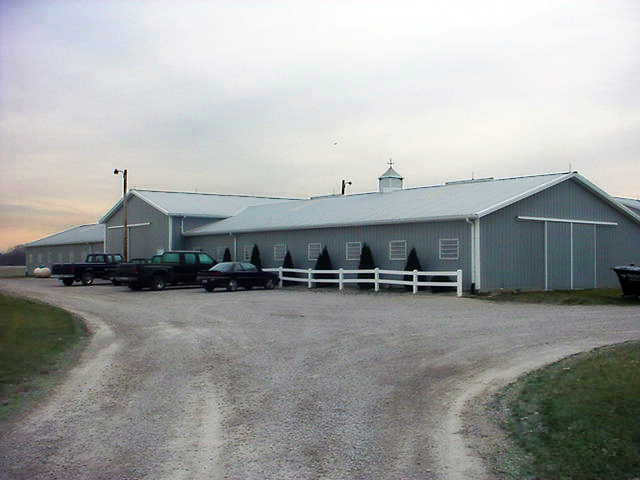
Multiple Phase I ESAs (FDIC)
FEDERAL DEPOSIT INSURANCE CORPORATION (FDIC)
TEXAS, MISSISSIPPI, TENNESSEE, OHIO
The FDIC insures loans with banks nationwide. When a bank goes out of business, the FDIC takes over the asset properties securing the debt. Sometimes, the borrower defaults on the loan and the FDIC becomes the owner of the property. When this happens, the FDIC requires that a Phase I ESA be performed on the property before it can be put up for auction. The properties that the FDIC owns range from commercial/industrial, residential and undeveloped lands. To date, dse has completed Phase I ESAs on twelve FDIC sites in Texas, Mississippi, Tennessee, and Ohio.
Multiple Phase I ESAs (GSA)
U.S. GENERAL SERVICES ADMINISTRATION (GSA), REGION 8
MONTANA, UTAH, SOUTH DAKOTA
dse performed eight Phase I ESAs on multiple sites located in the mountain states. These sites were being considered for either purchase or lease for construction of new federal buildings or for divestiture and required reports with a short turnaround. The Cedar City, UT site required additional review of cultural resources and a biological assessment. The site was also reviewed by the SHPO for Piute Indian significance and a potential infestation of prairie dogs, a Utah threatened species. One site included seven parcels of closed EPA Brownfield Sites with former PCB contamination. Another was a former Navy FUDS site with six large buildings and a former DLA metals depository facility.
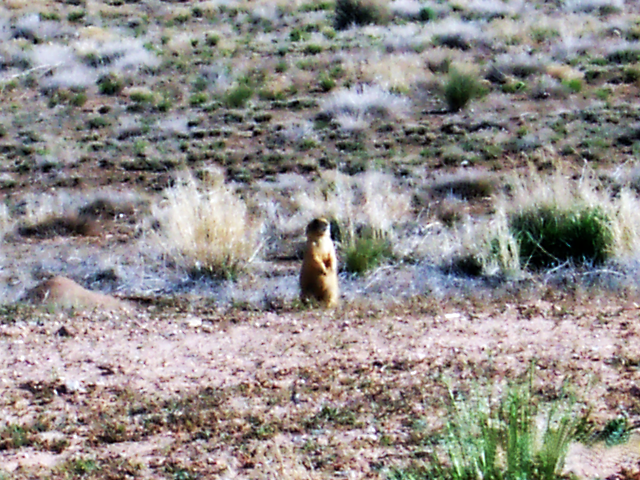
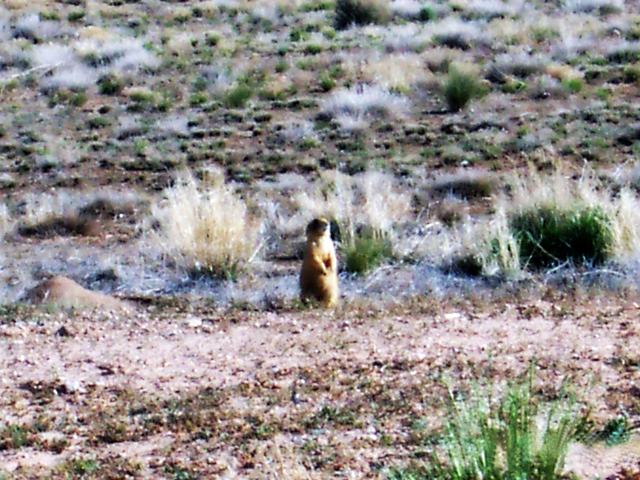
Multiple Phase II ESAs (GSA)
U.S. GENERAL SERVICES ADMINISTRATION (GSA)
MONTANA, UTAH, SOUTH DAKOTA
dse performed eight Phase II ESAs on multiple sites located in the mountain states. These sites were being considered for either purchase or lease for construction of new federal buildings or for divestiture and required reports with a short turnaround. One site included seven parcels of closed EPA Brownfield Sites with former PCB contamination. Another was a former Navy FUDS site with six large buildings and a former DLA metals depository facility that required the collection and analysis of an extensive number of soil samples.
Naval Air Station Joint Reserve Base (NAS-JRB)
FORT WORTH, TEXAS
dse performed a mold assessment and water intrusion survey for two buildings at the NAS-JRB in Fort Worth, Texas. The assessments included visual assessment, swab sampling, air sampling and water intrusion inspections for two buildings located at the base. The assessments were of the Band Hall and Air Control Tower. One building was found to have elevated concentrations of mold spores in the interior air and visual microbial growth. A remediation protocol was developed and provided to NAVFAC Southeast. The building was remediated and dse performed visual and air clearance sampling and certification upon completion of the remediation activities.
Category: Mold and Indoor Air Quality Assessment
Phase I and Phase II ESA Training
U.S. GENERAL SERVICES ADMINISTRATION (GSA)
FORT WORTH, TEXAS
dse provided training in Phase I/Phase II ESAs to the GSA’s real estate and environmental personnel from the Fort Worth and Denver offices. dse developed training materials and prepared manuals for trainees. dse also customized and prepared training exercises to help trainees develop skills and show examples of the major components of the Phase I/Phase II concepts and presented a three-day multi-media course that focused on ASTM and AAI requirements.
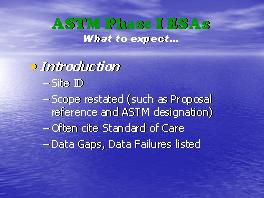
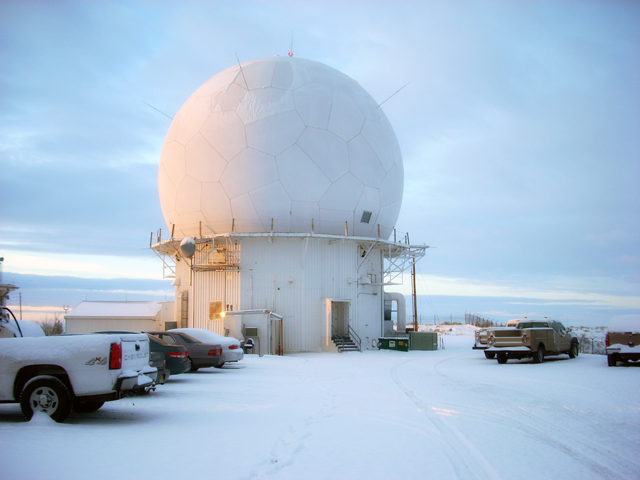
Phase I ESAs in Four Locations
FEDERAL AVIATION ADMINISTRATION (FAA)
ALBUQUERQUE AND SHEEP SPRINGS, NEW MEXICO
TEXARKANA, ARKANSAS
ROCKSPRINGS, TEXAS
dse conducted four Phase I ESAs modified to include soil sampling and analysis at four sites located in Albuquerque and Sheep Springs, New Mexico, Texarkana, Arkansas, and Rocksprings, Texas for the FAA. Based on prior experience, the FAA determined that significant levels of hydrocarbon constituents, metals and/or PCB contamination in the soil could have resulted from previous practices.
In order to determine if contamination requiring remediation was present, a Phase I ESA was performed at each site. The investigations included background research regarding past operations and practices as well as sampling of shallow soils at each site. The format and requirements of the investigations were complied with ASTM Standard E1527-05, Standard Practice for ESAs: Phase I ESA Process. In addition to the ASTM requirements, collection and analysis of shallow depth soils were incorporated into the investigations for each site.
Phase II ESAs in Four Locations
FEDERAL AVIATION ADMINISTRATION (FAA)
ALBUQUERQUE AND SHEEP SPRINGS, NEW MEXICO
TEXARKANA, ARKANSAS
ROCKSPRINGS, TEXAS
dse conducted Phase I ESAs modified to include Phase II ESA soil sampling and analysis at four sites located in Albuquerque and Sheep Springs, New Mexico, Texarkana, Arkansas, and Rocksprings, Texas for the FAA. Based on prior experience, the FAA determined that significant levels of hydrocarbon constituents, metals, and/or PCB contamination in the soil could have resulted from previous practices.
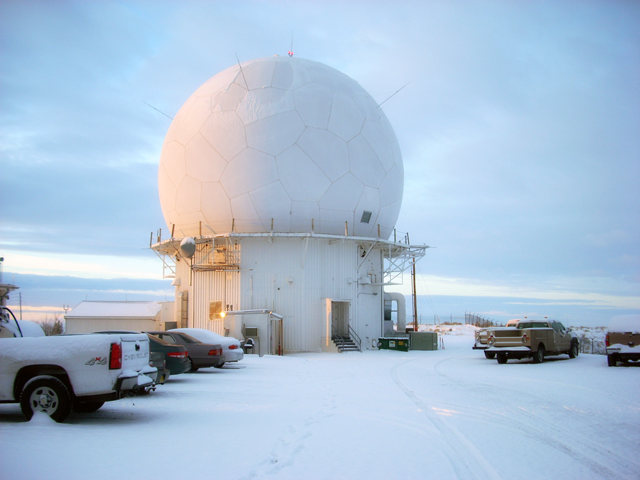
These Phase II ESAs included soil sampling and analysis. Samples were collected at various locations at each of the sites and analyzed for petroleum contamination, volatile and semi-volatile hydrocarbons, polychlorinated biphenyls, and characteristic hazardous waste metals. The sample analyses were conducted by a laboratory utilizing USEPA approved analytical methods.
dse developed an Quality Assurance Plan that provided the minimum requirements for the chemical analysis of the environmental samples for the project. The plan was designed to: (1) monitor the performance of the measurement systems to maintain statistical control and provide rapid feedback so that corrective measures could be taken before data quality was compromised and; (2) verify that reported data were sufficiently complete, comparable, representative, unbiased and precise so as to be suitable for the intended use.
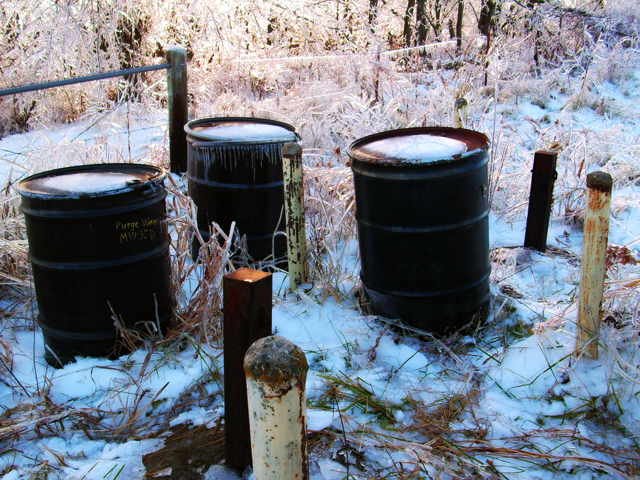
Pre-closure CERCLA Site Condition Verification
U.S. EPA OFFICE OF INSPECTOR GENERAL
PENNSYLVANIA, MISSOURI, LOUISIANA, NEW YORK, WISCONSIN
sampling of nine CERCLA Superfund sites. Sampling and laboratory analyses of soils, groundwater and surface water are being performed to verify that the current conditions meet the required cleanup goals for the site. These efforts are highly sensitive as the results determine whether or not the site is eligible for removal from the National Priority List. Chemicals of concern at these sites include metals, hydrocarbons, volatile organic compounds, semi-volatile organic compounds, hydrocarbons, pesticides and herbicides. Sites range in size from single households to over 100 acres. For each site, dse mobilizes a field team to obtain samples, followed by preparation of two major reports. The reports support EPA decision-making and subsequent reporting to Congress.
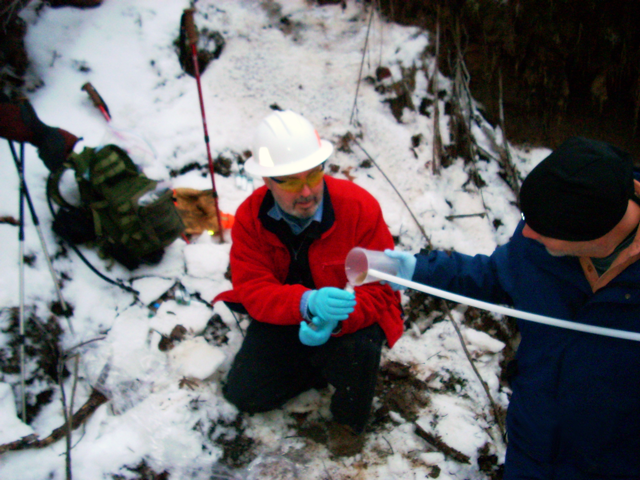
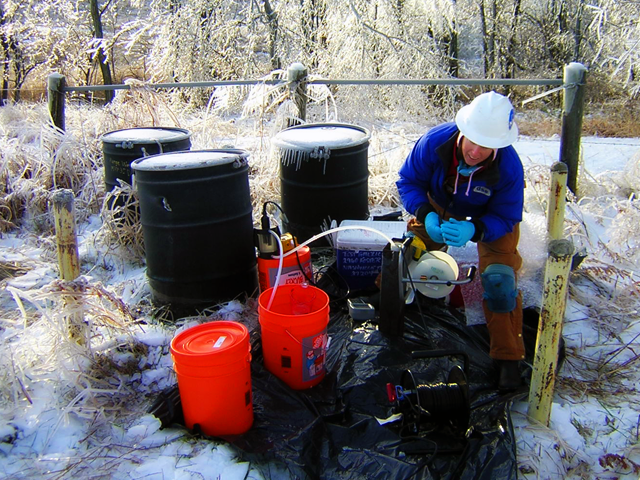
One report is due 10 days after completing the initial sampling events, and a final report 35 days after receipt of extensive laboratory analyses packages. These reports have typically exceeded 3,000 pages, and must be technically accurate, concise and with clear identification of deviations from past data protocols.
Category: Superfund
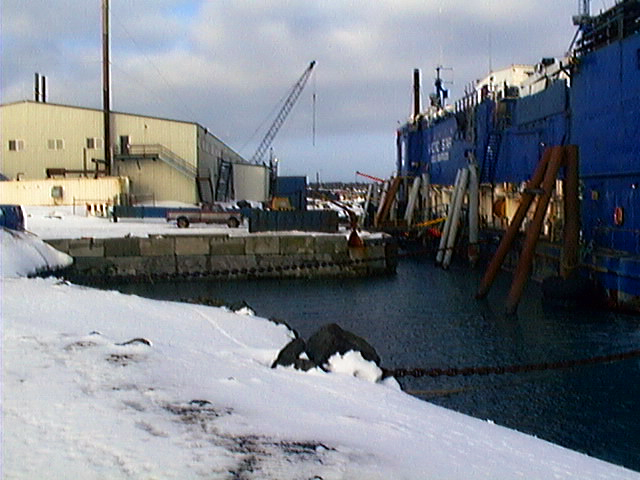
Remedial Investigation and Feasibility Study Support (RI/FS)
NATIONAL OCEANIC ATMOSPHERIC ADMINISTRATION (NOAA)
PRIBILOF ISLANDS, ALASKA
NOAA contracted CESI/dse to assess environmental impacts from prior activities to various sites on St. Paul Island. These sites had been impacted by various activities on the island since it came under the aegis of the United States of America. Many of these sites were impacted by diesel fuels, other petroleum hydrocarbons, and metals. The assessment activities were accomplished in support of planned remedial activities, which were intended to return the island to near pristine condition prior to returning the sites to the indigenous population. dse personnel installed and logged over 60 soil borings that were advanced and converted into monitoring wells.
The monitoring wells were used to collect groundwater characterization data, and to determine the hydrogeologic properties of the aquifer on the island. The water samples and soil cuttings were analyzed to determine the extent of impacts to the groundwater or vadose zone. dse personnel removed three underground storage tanks, and participated in the geological mapping of parts of the island. Phase I building condition surveys were also conducted by a dse field crew for several buildings that were used and/or operated by NOAA or other Federal Government agencies.
Category: Superfund
Runway 34 Medium Intensity Approach Light System with Runway Alignment Indicator Lights (MALSR)
FEDERAL AVIATION AGENCY (FAA) ON BEHALF OF THE CITY OF ARLINGTON, TEXAS
ARLINGTON MUNICIPAL AIRPORT, ARLINGTON, TEXAS
CATEX Review, Environmental Assessment, 404 Permitting and Archaeological Survey
The initial project scoping for the Arlington Airport MALSR Lighting Project indicated that the project merited a CATEX because the project was required to meet Federal mandates associated with the Homeland Security Act. However, the initial dse review of the CATEX, (as prepared by others) indicated that the CATEX did not address jurisdictional wetlands, floodplain construction requiring a Section 404 permit, Section 4(f) park impacts associated with a city trail, and cultural resources. Thus the project merited an EA. (In addition, the Homeland Security Act is not formally included on the list of allowable exclusions related to the CATEX process). dse developed the Draft EA on an expedited timeframe, and completing the formal community input and public information process, including contacting over 200 individual landowners that are located within one-half mile of the proposed airport lighting improvements. dse also subcontracted and oversaw the completion of an Archaeological Survey.
Category: National Environmental Policy Act (NEPA)
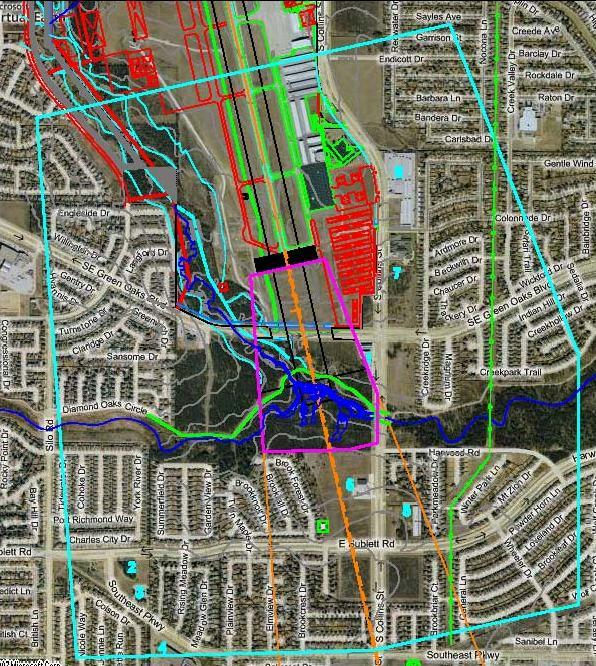

Space Shuttle Columbia Recovery
U.S. EPA SUPERFUND TECHNICAL ASSESSMENT AND RESPONSE TEAM (START) REGION 6 AND WESTON SOLUTIONS, INC. (PRIME CONTRACTOR)
EAST TEXAS
After the tragic breakup of the Space Shuttle Columbia on February 1, 2003, dse was called upon as an EPA START subcontractor to Weston Solutions, Inc. to provide personnel to help locate, document, and recover parts of the Columbia Shuttle in Texas and Louisiana. As the scope of the recovery efforts grew, dse was tasked with recruiting other small firms to provide personnel to the five ICPs located from north central Texas to east Texas. dse coordinated with over 20 firms to provide personnel for administrative, data processing, and field recovery duties to the various ICPs that needed them. The field recovery operations consisted of “point recovery” and “search and recover” phases. The point recovery phase entailed small teams comprised of one representative each from the EPA, NASA and START and two to three hazmat technicians, utilizing global positioning systems and dead reckoning to locate previously identified but unrecovered shuttle parts. The search and recovery phase entailed larger teams comprised of representatives from EPA, NASA, START, hazmat technicians, and twenty-person crews of USFS fire fighters.
When a part was located, the USFS personnel would alert START and NASA personnel to determine if the piece in question actually was a part of the Columbia and if the part in question posed any special hazards or handling needs. If the piece in question was determined to be nonhazardous, it was assigned a unique identification number, located with a hand-held GPS unit, photographed, sealed in an appropriate container, and then transported to a central collection depot located at each ICP for further processing and evaluation by NASA personnel. Hazardous pieces, or other items requiring special handling, were identified, their locations were marked and safeguarded, and an appropriate team of hazmat or other specialists were called upon and dispatched immediately to handle the item properly.
Category: Disaster Management
Targeted Brownfields Assessment
U.S. ARMY CORPS OF ENGINEERS
TEXAS
These assessments were conducted on behalf of the Property Owners by the U.S. Environmental Protection Agency (EPA) Region 6 Targeted Brownfields Assessment (TBA) program. The EPA Region 6 Brownfields Team funded the United States Army Corps of Engineers (USACE) Fort Worth District to execute the work reflected in these reports. These Phase I ESAs were requested by the designated User as part of their due diligence to assess the current status of environmental conditions and compliance at the Subject Properties. A records review was conducted of available records of public use for indications of Recognized Environmental Conditions (REC) or concerns.
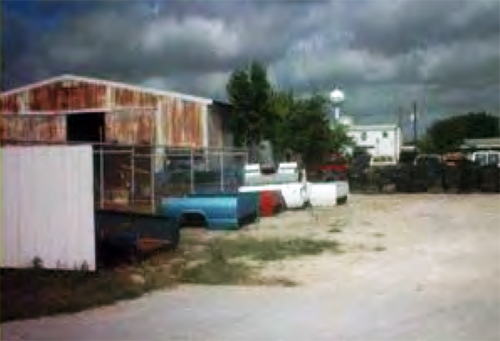
Some documents reviewed included: historical/current aerial photographs, historical city directories, area related geologic/hydrogeologic information, flood plain maps, wetlands maps and others, and depending on Scope, a review request to the State’s Historical Preservation Office. Site reconnaissance of the Site was conducted in an attempt to identify past and present uses of the Site and adjoining properties, the Site’s physical setting, and any obvious environmental conditions. Interviews were attempted to gather information about the Site’s environmental status from people knowledgeable about the Site and surrounding properties. The gathered information was analyzed to produce a report and recommendations.
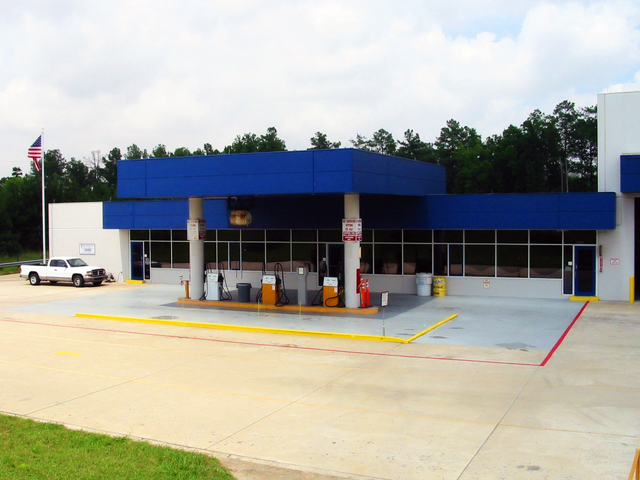
Underground Storage Tank (UST) Compliance Audit and Management
UNITED STATES POSTAL SERVICE (USPS) AND WESTON SOLUTIONS, INC. (PRIME CONTRACTOR)
TENNESSEE, GEORGIA, FLORIDA
dse personnel evaluated and documented the UST installations at nine USPS sites in Tennessee, Florida and Georgia. After the inspections dse prepared OMM Plans tailored to the needs of each of the facilities. The reports included site photographs, UST system drawings, summary tables and site specific recommendations for operating, maintaining and managing each facility’s USTs. Approximately one month after delivering the reports to the facilities, dse personnel revisited the sites and provided training to key personnel.
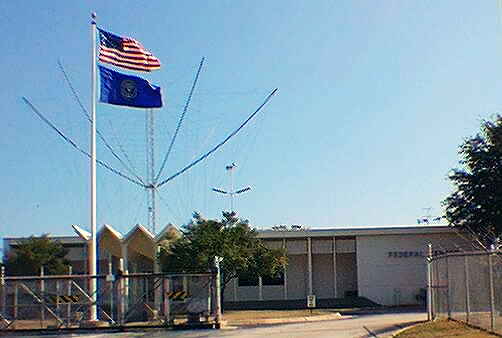
UST Removal
FEDERAL EMERGENCY MANAGEMENT ADMINISTRATION (FEMA), REGION 6
DENTON, TEXAS
dse provided project management and oversight of the in-place closure of part of the UST system at the FEMA Region VI Site. TCEQ considered the site to have three separate source areas: a pipechase, a fuel dispenser island and the tankhold. The system consisted of a fuel island with two dispensers, two day tanks ASTs, four USTs in a common tankhold and associated below ground piping. The four USTs included two 20,000-gallon diesel USTs, which dse closed in-place. One 20,000-gallon water tank and one 5,000-gallon hydro-pneumatic tank were to remain in use. The two day tanks, located within Site buildings and their associated above ground piping were also removed. dse conducted document review, correspondence and submitted various closure, registration and permit documents with the TCEQ.
dse personnel coordinated with FEMA and collected a groundwater sample from the previously installed tankhold observation well prior to the UST closure in order to provide a baseline. Fourteen soil samples along the pipechases and one soil sample beneath each dispenser island were collected and analyzed to close the fuel lines in-place and close out the dispenser islands. In order to close the two diesel USTs in-place, a series of soil samples were collected from the native soils outside the tankhold perimeter. One sampling point was converted to a monitor well, which was developed, purged and sampled using low-flow methods. Both diesel USTs were emptied, triple rinsed, purged, and then filled with a flowable fill material consisting of a lightweight concrete and sand mix. Emergency generator equipment, ASTs, associated piping and monitoring equipment were removed from three equipment rooms at the Site and the piping was capped. All samples were analyzed for BTEX/MTBE and TPH with PAH analyses for the sample with the highest detectable concentration.
Category: Aboveground/Underground Storage Tank (AST/UST) Installation, Repair, Removal and Remediation
Waterloo Refinery Assessment
U.S. EPA SUPERFUND TECHNICAL ASSESSMENT AND RESPONSE TEAM (START) REGION 6
WATERLOO, ARKANSAS
dse assessed the environmental impacts of an abandoned oil refinery located in a remote area of Arkansas. The assessment was targeted at identifying wastes and chemicals of concern that would pose a threat to local residents and remediation workers. Asbestos was a major concern because of the large quantity of damaged suspected ACBMs believed to be present on-site. Pipe insulation was observed scattered across the site and concentrated in several large piles which appeared to have been in place for many years. dse collected water and sludge samples from waste pits and visually inspected the approximate 80 acre facility. dse designed a sampling strategy that limited the number of asbestos samples collected to control costs and complete the inspection under an accelerated schedule.
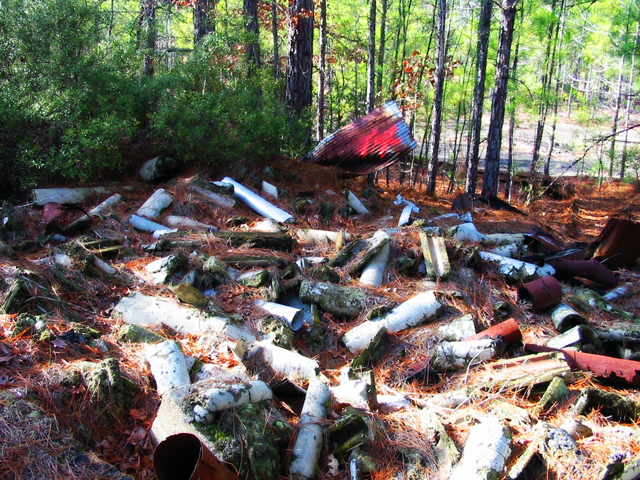
dse prepared a report including drafted site plans identifying sample locations, site photographs, summary tables and conclusions/recommendations. In addition, air samples were collected in strategic locations to establish baselines for negative exposure assessments. Three different types of asbestos were identified in 11 different materials with an estimated total volume of more than 1,500 cubic yards. dse personnel prepared an abatement specification and performed a walk through with qualifying abatement firms.
Category: Superfund
